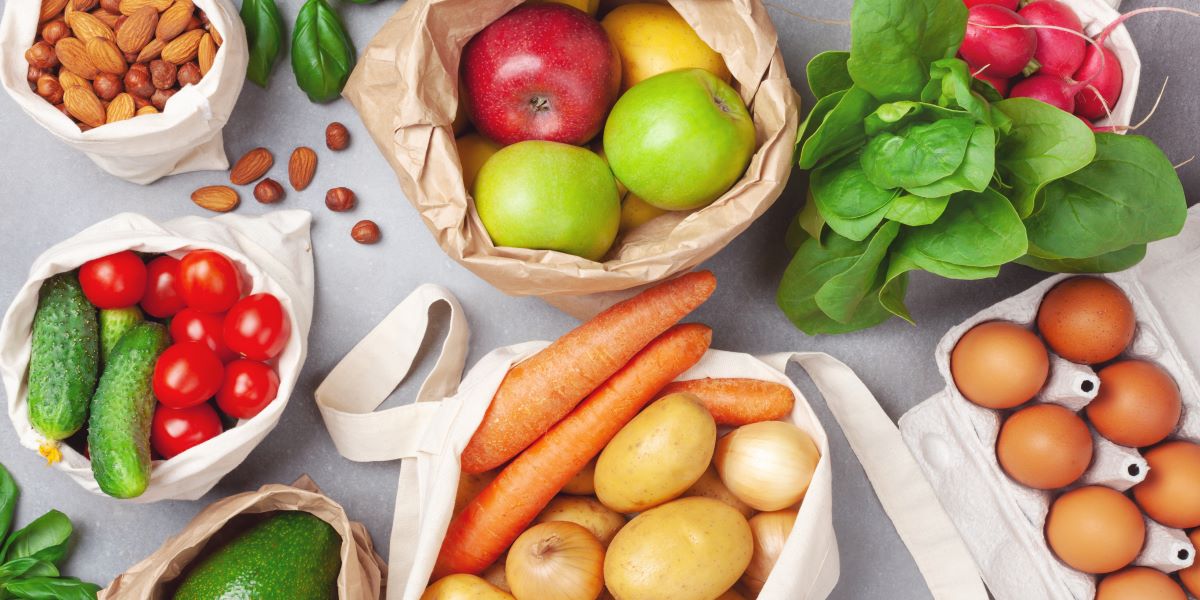Is it better to source food locally or globally?
June 23, 2020
Although the debate over sourcing food locally versus globally has been going on for years, there has been a renewed interest in the topic due to the COVID-19 pandemic and associated supply chain disruptions. When seeking answers, it is important to evaluate a variety of factors including environmental impacts, social impacts, economics, accessibility, food security, nutrition, and food safety. It is also important to understand that there are various definitions and biases associated with “local” including the perception that “local” is synonymous with “ethical” and that the sustainability of global supply chains is automatically connected to distance.
What does “local” really mean?
In the past, “local” has been used as a buzzword to draw consumers in due to perceptions around supporting local farmers, promoting sustainability and gaining health benefits. Despite this, it is important to understand how “local” is defined since consumers may consider it to be within their community while others view it much more broadly.
For example, as part of efforts to modernize food labelling, the Canadian Food Inspection Agency (CFIA) has adopted an interim policy which recognizes local as “food produced in the province or territory in which it is sold, or food sold across provincial borders within 50km of the originating province or territory.”
In comparison, the United States Department of Agriculture (USDA) considers food to be “local” if it is consumed within 400 miles of its production while the US National Agricultural Law Center considers “local” to be within 1500 miles (for context, Vancouver is approximately 1425 miles from Winnipeg). Therefore, these varying metrics can mislead consumers and ultimately impact environmental and economic considerations when deciding between buying products sourced locally or globally.
Environmental impacts
One major factor to consider when comparing local and global food production/supply chains is transportation related emissions. Many consumers assume that transportation for global supply chains is a huge source of emissions but in reality, it accounts for less than 10% of food-related emissions. Therefore, how food is grown, raised, caught, etc. plays an important role since a significant amount of emissions come from land use changes, fertilizers, and methane from livestock. Therefore, many may be surprised to learn that they can reduce their environmental footprint more effectively by changing their diet rather than focusing on where their food is coming from.
Transportation can also be complicated for local farmers since they often require refrigerated trucks to get products directly to consumers or farmer markets. In many cases, these trucks are only partially filled making this form of transportation inefficient, particularly if multiple “local” trucks are going to a single destination (e.g. restaurant) in a single day. Meanwhile, larger companies are able to find economies of scale and operational efficiencies that help reduce emissions.
Social & community impact
Sourcing locally can also have important social and community benefits, including supporting local businesses and jobs while fostering pride in the community. The development of relationships within a community can help increase trust towards products, empower consumers, and increase interest in how goods are grown and manufactured. When local businesses and farmers thrive, there are in a better position to give-back to the community in terms of fundraising, volunteering, and hosting sponsored activities.
Alternatively, global sourcing can help promote the creation of fair-trade products through sourcing agreements. These agreements can be important for economic growth and employment, particularly within developing countries where opportunities may be limited.
Economics
From a consumer’s perspective, it can feel nice to support local farmers in your community and feel that sense of connection while supporting the creation of local jobs. Despite this, it is not always cost-effective or sustainable to force growth in unnatural environments when better climates, land and expertise exist elsewhere.
In some cases, Canadians will have to pay more for local goods and have seasonal diets since there are not economies of scale as there are with global supply chains. Ultimately, it is important for consumers to understand that buying locally does not just have to occur at farmers’ markets as many large grocery chains source locally when it makes sense from a volume, quality, and price perspective.
Since the beginning of the COVID-19 pandemic, many grocers have added flexibility in their supplied volume requirements to allow more locally grown products in their stores. This has also helped to fill the output gap that was created when restaurants had to shutdown during the pandemic.
Availability
In reality, what you can grow in your local community or “foodshed” may be limited given local conditions and seasonal changes, whereas global supply chains can provide us with a variety of products year-round. For most consumers, choice and convenience are important, particularly since food like avocados and bananas cannot be grow at-scale in Canada. To some extent, local greenhouses can help us solve that problem but there are still environmental benefits and drawbacks. For example, greenhouses require less water than open fields but still require a significant amount of energy.
Food Security
For many Canadians, food security may not be front of mind under normal circumstances given fully stocked grocery stores but the pandemic has started to increase awareness around this issue. While sourcing locally and domestically has helped compensate for disrupted or delayed supply chains during the pandemic, global supply chains can also provide flexibility and security under normal circumstances.
For example, if weather patterns disrupt crop yield in some regions, food can be sourced elsewhere for companies that have multiple suppliers. In comparison, if a community is only relying on local production, weather variation can have significant impacts. Therefore, it’s important for companies to find a balance between relying on low-cost efficient suppliers while also having alternate suppliers in case there are disruptions.
Nutrition & food safety
For some consumers there is a perceived health benefit with consuming locally grown “fresh” foods, including produce. To an extent this is true as food is fresher and more nutritious if it is consumed within a few days but refrigeration throughout supply chains and in stores goes a long way for “vitamin and taste retention” as well as food safety. Similarly, Dr. Pierre Desrochers from the University of Toronto, argues that “there is no simple correlation between freshness and nutritional value, but there is one between long-distance trade and the year-round availability of fresh produce.”
In terms of food safety, there are some increased health and contamination risks associated with large-scale processing facilities given the diverse origins of food and number of employees, whereas local food issues can be kept localized. Similar food safety regulations are in place at the provincial level or through the Canadian Food Inspection Agency (CFIA), and apply to both grocers and markets to ensure food safety. In addition, many larger corporate entities obtain supply chain accreditation that smaller local markets would not have. For example, the Global Food Safety Initiative (GFSI) and Hazardous Analysis and Critical Control Points (HACCP) are two of the most common accreditations.
Summary
Overall, there is no clear evidence that local or global is better than the other, particularly with the varying definitions of “local”. Each has its benefits and drawbacks depending on where you live, what can be grown locally and what kind of food you want to consume. Ultimately, the COVID-19 pandemic has shown that companies need to find a balance between costs, returns and risk when sourcing locally, domestically or globally but a combination can help provide stability within supply chains.



